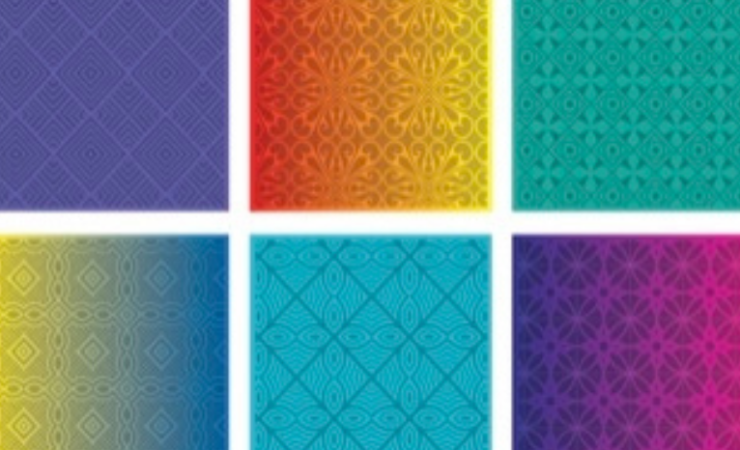Color-Logic has released the latest Pattern-FX volume, providing graphic designers with patterns as an Adobe Illustrator palette.
Color-Logic develops colour communication systems and software tool sets for a variety of special effect printing applications, providing brand owners, product managers, corporations and advertising agencies the ability to differentiate themselves and their clients. Using the Color-Logic Design Suite and metallic colour palettes, for example, designers can utilise these patterns, ‘into printed marketing pieces in just minutes.’
On the release of Pattern-FX volume 6, Mark Geeves, director of sales and marketing at Color-Logic, commented, ‘In recent years, patterns have become a key element of graphic design. Color-Logic Pattern-FX volumes are illustrator palettes which incorporate the Color-Logic special effects and make pattern usage effortless, predictable and reproducible. They can be rotated and scaled, and since Color-Logic colours can be gradated, two or more colours can be used within one pattern.
‘When using the six Pattern-FX volumes together with the 924 metallic colours in the Color-Logic Design Suite, graphic designers have access to 665,290 predictable and reproducible embellishment patterns with just a few mouse clicks, although with scaling and rotation, the true number of print embellishments is essentially unlimited.
‘In addition, with Color-Logic Gradation-FX, graphic designers can blend metallic colours into other metallic colours for each pattern or blend process colours into metallic colours for use on conventional or digital presses.’
Mr Geeves continued, ‘Once graphic designers have Color-Logic tools and understand what is possible with print embellishment, they will increase the use of value added print. Using Color-Logic enables graphic designers to produce all colours and embellishments with just five inks: silver ink or toner with CMYK on paper, or white ink or toner with CMYK on reflective stock. Color-Logic makes print embellishment not only predictable but economical for production.’


